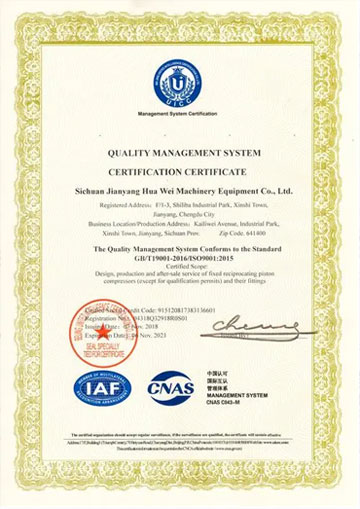

Innovative Self-Tightening Screw Technology Enhancing Efficiency and Reliability in Mechanical Assemblies
ธ.ค. . 16, 2024 12:08 Back to list
Innovative Self-Tightening Screw Technology Enhancing Efficiency and Reliability in Mechanical Assemblies
Self-Tightening Screws Revolutionizing Fastening Technology
In the fast-evolving world of engineering and manufacturing, innovative solutions are continuously sought to enhance efficiency, reliability, and safety. One such breakthrough is the development of self-tightening screws, a novel fastening technology that promises to revolutionize various industries. By eliminating the need for manual tightening, reducing the risk of loosening, and minimizing installation time, self-tightening screws are poised to become a game changer in the fastening domain.
Understanding Self-Tightening Screws
At its core, a self-tightening screw utilizes a unique mechanism that allows it to maintain its grip securely over time. Unlike traditional screws, which can loosen due to vibrations, temperature fluctuations, or mechanical stresses, self-tightening screws harness principles from physics and material science to ensure a firm hold. These screws often utilize features such as ratchet-like designs or advanced materials that expand or contract under specific conditions to maintain tension.
The Mechanism Behind Self-Tightening Screws
The most common approach in self-tightening screws involves a specialized thread profile or a built-in locking mechanism. As the screw is turned and driven into a material, the design enables it to 'bite' into the substrate, creating a firm grip. Furthermore, the locking feature can prevent reverse movement, ensuring that once the screw is fastened, it remains securely in place. This has profound implications for applications where even slight loosening could lead to catastrophic failures, such as in aerospace, automotive, and construction industries.
Advantages of Self-Tightening Screws
1. Reduced Maintenance One of the most significant advantages of self-tightening screws is the reduction in maintenance needs. In many applications, screws can loosen over time, requiring re-tightening. Self-tightening screws can mitigate this issue, enhancing reliability and reducing the frequency of maintenance checks.
2. Enhanced Safety In critical applications, loose screws can pose severe safety risks. By using self-tightening screws, industries can reduce the likelihood of accidents due to loosening fasteners, thus ensuring greater safety for both workers and end-users.
3. Time Efficiency Installation time can be significantly reduced with self-tightening screws. Without the need for manual retightening, assembly lines can operate more efficiently, leading to improved productivity. This is particularly valuable in high-volume manufacturing environments, where every second saved translates to substantial time and cost savings.
self tightening screws

4. Versatility Self-tightening screws can be used across a multitude of applications, from household items to industrial machinery. Their design allows them to be adaptable to various materials, including wood, metal, and plastic, further broadening their potential applications.
Applications Across Industries
Given their numerous benefits, self-tightening screws are increasingly being adopted in various sectors. In the automotive industry, manufacturers are utilizing these screws in engine assemblies, where vibrations are prevalent, to prevent failures. The aerospace sector, which demands the highest safety standards, also finds self-tightening screws advantageous in maintaining the integrity of critical structures.
In construction, the use of self-tightening screws is gaining traction, particularly in modular buildings where components need to be securely fastened but also need the flexibility to be reconfigured. Furthermore, furniture manufacturers are beginning to incorporate self-tightening screws to ensure longevity and durability in their products.
Challenges and Future Directions
Despite the promising technology of self-tightening screws, challenges remain. Manufacturing these specialized fasteners can be more expensive than traditional screws, which may deter some cost-sensitive applications. Moreover, further research is needed to optimize their designs for specific uses.
The future of self-tightening screws looks bright, however. Ongoing innovations in materials science and manufacturing techniques are likely to reduce production costs while enhancing performance. As industries increasingly recognize the benefits of these screws, adoption is expected to grow, leading to safer, more efficient manufacturing processes.
Conclusion
In conclusion, self-tightening screws represent a significant advancement in fastening technology, offering numerous advantages in terms of reliability, safety, and efficiency. As industries continue to seek innovative solutions, these screws may well become standard components in various applications, marking a new era in fastening technology. As we embrace this innovation, we move closer to a future where fastening systems are not just secure but intelligent, responding dynamically to the demands of modern engineering.
Latest news
-
Hot Dip Galvanized Bolts-About LongZe|High Strength, Corrosion Resistance
NewsJul.30,2025
-
High-Strength Hot Dip Galvanized Bolts - Hebei Longze | Corrosion Resistance, Customization
NewsJul.30,2025
-
Hot Dip Galvanized Bolts-Hebei Longze|Corrosion Resistance&High Strength
NewsJul.30,2025
-
High-Strength Hot-Dip Galvanized Bolts-Hebei Longze|Corrosion Resistance&High Strength
NewsJul.30,2025
-
Hot Dip Galvanized Bolts-Hebei Longze|Corrosion Resistance&High Strength
NewsJul.30,2025
-
Hot Dip Galvanized Bolts - Hebei Longze | Corrosion Resistance, High Strength
NewsJul.30,2025

